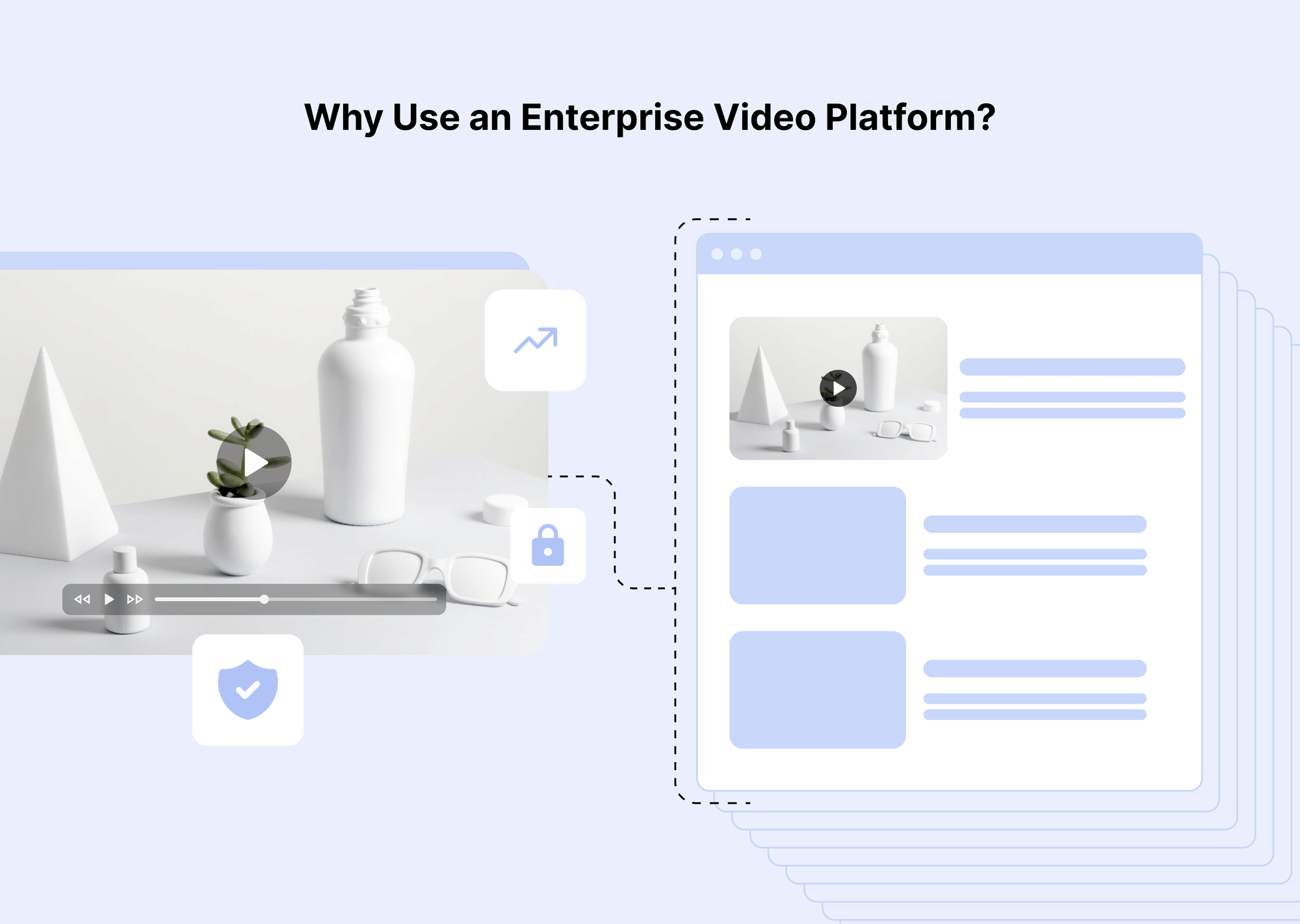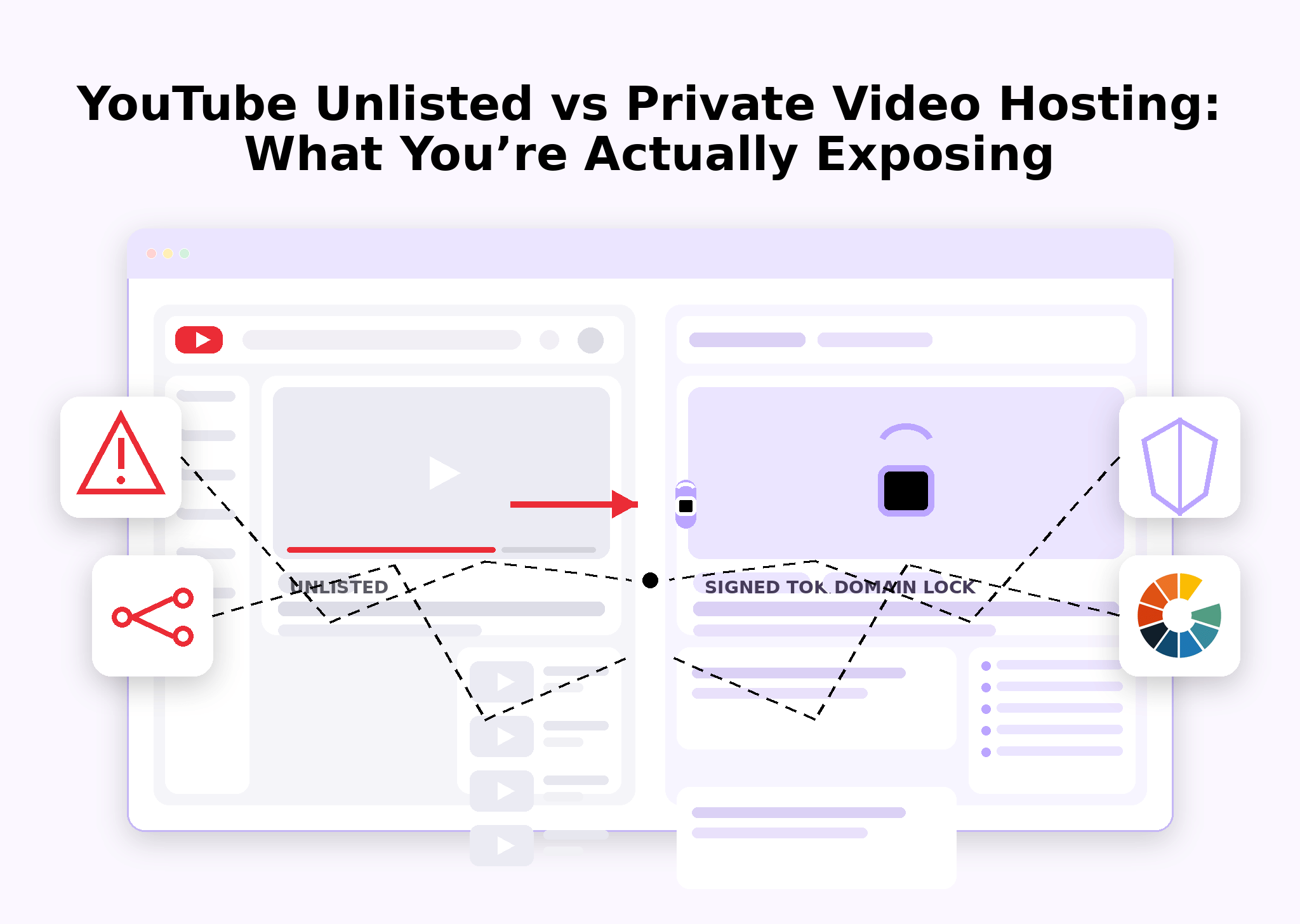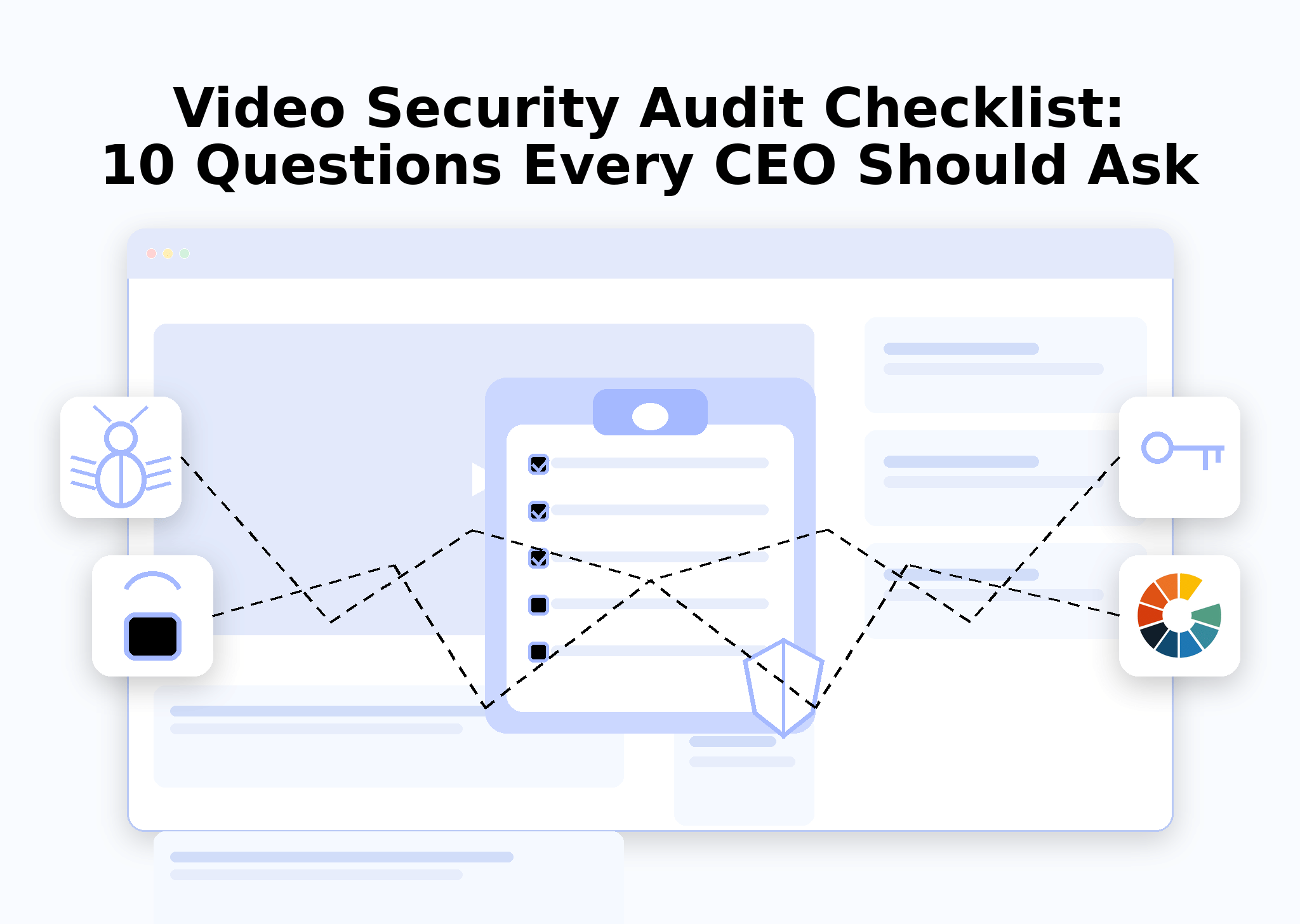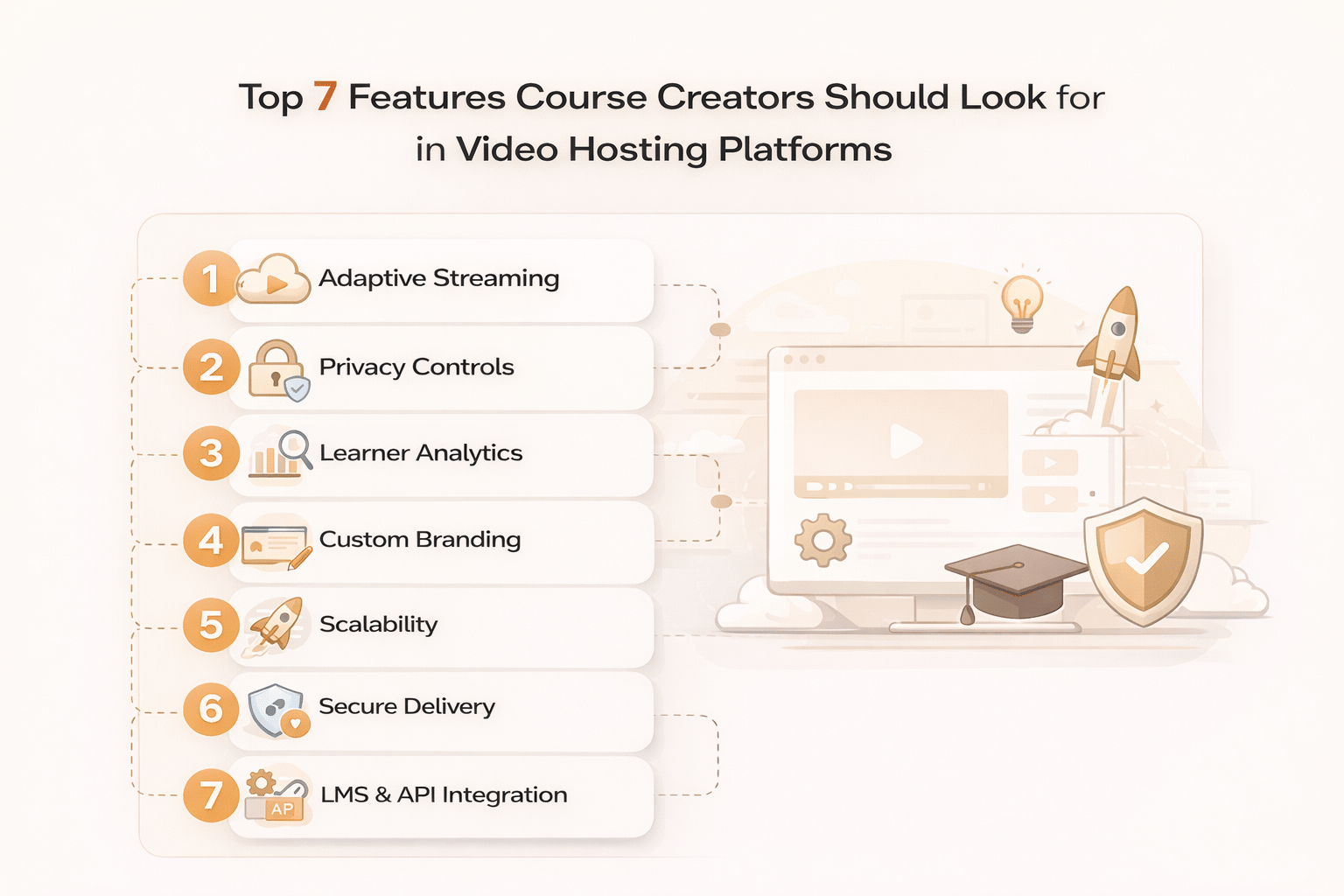Introduction
Businesses today face a paradox with video: it’s the most engaging way to communicate, yet the easiest to mismanage. Many organizations still rely on public platforms like YouTube or free Vimeo accounts for critical communication, and it backfires:
- Compliance nightmares: A financial training session ends up indexed by Google, exposing confidential material.
- Brand dilution Occurs When Competitor ads appear next to your carefully produced product launch.
- Security risks: An onboarding video shared outside your firewall is copied and reuploaded.
- Operational inefficiency: Employees waste hours searching across scattered files, resulting in lost productivity.
These mistakes can cost thousands of dollars per employee per year in wasted time, compliance fines, and brand damage.
That’s why enterprises are moving to Enterprise Video Platforms (EVPs), systems built from the ground up for security, scalability, and branding. An EVP doesn’t just play video. It becomes the backbone of communication, training, and customer engagement, ensuring your content is:
- Protected with DRM and encryption.
- Scalable to audiences from 50 to 50,000+.
- Branded with your logo, not someone else’s.
- Measurable with advanced analytics.
- Integrated with your LMS, CRM, and intranet tools.
Let’s break down what EVPs are, why they matter, and how they can transform business communication.
What Is an Enterprise Video Platform?
An Enterprise Video Platform (EVP) is a secure, business-grade solution for hosting, managing, streaming, and analyzing video content. Unlike public tools, EVPs provide end-to-end control:
- Ad-free playback: No distractions, no third-party logos.
- Granular access control: Define precisely who can watch.
- Security-first design: DRM, encryption, SSO authentication.
- Scalability: Optimized delivery for global audiences.
- Integrations: Connect with LMS for training, CRM for sales, and CMS for websites.
In other words, an EVP is the corporate equivalent of YouTube — but private, secure, and tailored to your workflows.
EVP vs Public Video Hosting
| Feature | Enterprise Video Platform | Public Video Hosting |
|---|---|---|
| Security | DRM, encryption, SSO, audit trails | Basic privacy settings |
| Branding | White-label, custom domains | Platform branding & ads |
| Compliance | SOC 2, GDPR, HIPAA, FedRAMP | None |
| Analytics | Heatmaps, drop-offs, engagement by role | View counts, likes |
| Integrations | LMS, CRM, CMS, APIs | Minimal |
| Target Audience | Employees, partners, clients | General public |
Key Benefits of Using an Enterprise Video Platform
1. Complete Brand Control and Ad-Free Experience
Public platforms turn your hard-earned attention into their ad revenue. An EVP ensures your brand is the only brand viewers see.
- 100% ad-free experience.
- White-label video player with logos, colors, and fonts.
- Host videos on your own domain for credibility.
- Add interactive elements: CTAs, chapters, surveys.
Example: Gumlet allows enterprises to launch fully branded video portals. A SaaS firm embeds Gumlet-hosted demos directly in its app, ensuring customers see only its brand, not competitor ads.
2. Security, Compliance, and Access Control
For industries like healthcare, finance, and education, security isn’t optional. EVPs are built with compliance-grade protection.
- DRM (Widevine, FairPlay) prevents copying.
- Signed URLs expire automatically, blocking unauthorized sharing.
- Geo/IP restrictions limit access to approved regions.
- SSO & RBAC integrate with enterprise identity systems.
- Compliance certifications: SOC 2, HIPAA, GDPR.
Example: A healthcare provider uses Gumlet with DRM and login-based access to ensure HIPAA-compliant training for medical staff.
3. Scalable Performance for Global Delivery
The more video you use, the more delivery matters. EVPs are designed for global reliability.
- Multi-CDN delivery ensures no single point of failure.
- Adaptive bitrate streaming keeps playback smooth on any device.
- Edge delivery reduces latency for international teams.
- GPU-powered encoding speeds up uploads and processing.
Example: A multinational runs live investor briefings. Gumlet’s multi-CDN setup ensures buffer-free playback for 20,000+ global viewers.
4. Powerful Analytics and Insights
Without analytics, video ROI is a guessing game. EVPs turn video into a measurable asset.
- Engagement heatmaps show which sections retain viewers.
- Drop-off analysis reveals where audiences tune out.
- Segmented reporting by department, geography, or role.
- Exportable reports for HR, L&D, or marketing.
Example: Gumlet’s analytics helped an e-learning company identify that learners consistently dropped off at the 15-minute mark, prompting a switch to micro-learning modules.
5. Developer Tools and Workflow Automation
Enterprises don’t just watch video; they embed it into workflows. EVPs provide API-first architectures.
- REST APIs & SDKs: Automate uploads, embeds, and management.
- Webhooks: Trigger CRM alerts when prospects watch videos.
- LMS & CMS integrations: Automatically sync training completion.
Example: A fintech firm connects Gumlet to its CRM, automatically flagging sales reps when a prospect watches 80% of a demo video.
When Should You Consider an Enterprise Video Platform?
An EVP becomes essential when:
- You handle sensitive data (healthcare, finance, government).
- Your video library grows beyond 50+ videos per month.
- You stream regular webinars, training, or town halls to 100+ participants.
- You need compliance-grade reporting (audit trails, certifications).
- You want to monetize video content securely.
Signs It’s Time for an EVP
| Business Situation | Why an EVP Helps |
|---|---|
| Distributed teams worldwide | Consistent, secure delivery |
| Growing training content library | Centralized management & search |
| Compliance-heavy industry | DRM, audit logs, certifications |
| Customer engagement with video | Analytics, CTAs, integration with CRM |
| Scaling marketing & events | Global delivery, white-label branding |
How to Choose the Right Ad-Free Video Hosting Platform
Evaluating vendors can be overwhelming. Use this step-by-step framework:
Step 1: List Use Cases
- Internal comms? Training? Customer marketing? Support?
Step 2: Prioritize Security
- DRM, encryption, SSO, and RBAC should be non-negotiable.
Step 3: Check Scalability
- Can the platform handle both VOD & live events for thousands?
Step 4: Assess Branding Options
- White-label player, domains, CTAs, interactive elements.
Step 5: Test Integrations
- LMS, CRM, CMS, analytics platforms.
Step 6: Evaluate Vendor Support
- SLA-backed guarantees, onboarding help, and documentation.
Step 7: Compare Pricing Models
- Look beyond licenses: check bandwidth, storage, and support costs.
Conclusion
Video has evolved from a supporting asset to a strategic business channel. Organizations that fail to treat it as such risk losing productivity, security, and brand equity.
An Enterprise Video Platform gives you:
- Control: White-labeled, ad-free experiences.
- Security: DRM, encryption, compliance certifications.
- Scalability: Global, buffer-free streaming.
- Insights: Analytics that drive ROI.
- Integration: APIs and connectors for seamless workflows.
Whether you’re a fast-scaling startup, a mid-sized business, or a global enterprise, adopting an EVP early safeguards your video strategy.
👉 For enterprises seeking a modern, API-first solution with enterprise-grade security, Gumlet offers the perfect balance of flexibility and control. Start with a demo or free trial to see how EVPs can transform your communication.
FAQ
What’s the difference between enterprise video platforms and free hosting tools?
Enterprise platforms provide ad-free branding, advanced security, and integrations. Free tools like YouTube are built for public distribution.
Do all businesses need an enterprise video platform?
Not all. But if you’re scaling video, handling sensitive content, or embedding it into workflows, an EVP is critical.
Are EVPs only for large corporations?
No. Startups and mid-sized companies use them to differentiate early with branded training and customer videos.
Can EVPs handle both internal and external video?
Yes. They’re designed for employee training, CEO updates, AND customer-facing marketing.
How do EVPs improve ROI?
Analytics + CTAs track video impact, ensuring you can tie content to training completion, lead conversion, or engagement uplift.
Which industries benefit most?
Healthcare, finance, government, SaaS, and education, essentially, any sector where security and compliance matter.
Is migration from public platforms complex?
No. Platforms like Gumlet provide automated migration tools and onboarding support to transition smoothly.




